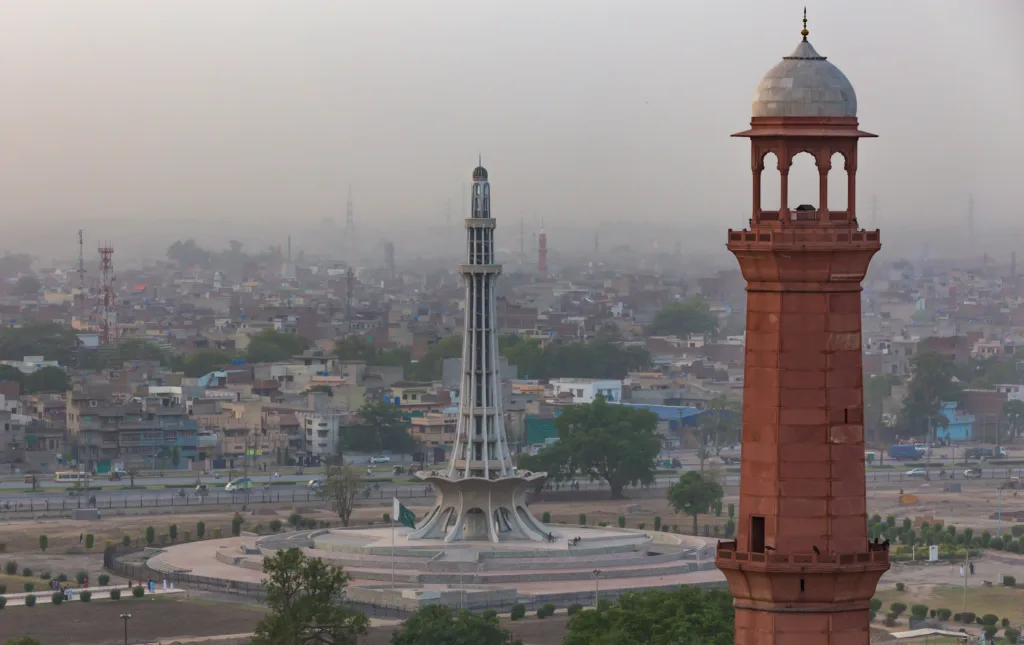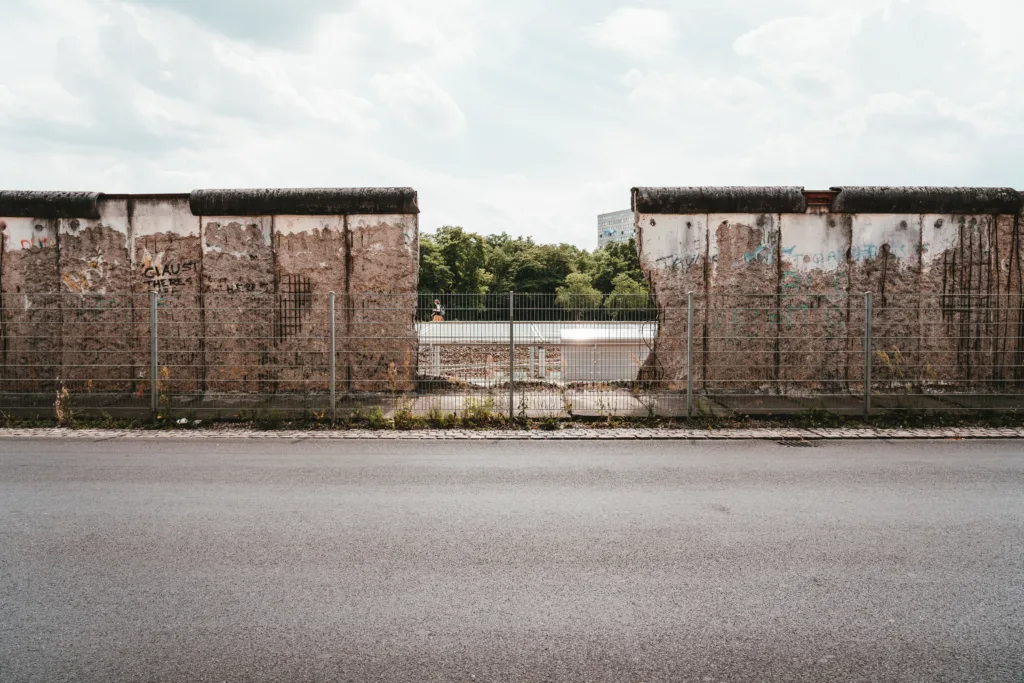Superimposed boundaries are political barriers created by colonial powers that often disregard the cultural, religious, and ethnic divisions of the people living in the affected areas. These boundaries are often the result of arbitrary lines drawn by European empires during the colonial period, which then became the basis for post-colonial nation-states.
Examples of superimposed boundaries include the 49th parallel US-Canada border, the Green Line separating Israel and the Palestinian Territories, the Division of Kurdistan, Hadrian’s Wall, the Durand Line separating Afghanistan and Pakistan, and the McMahon Line separating India and Tibet/China. Perhaps the most well-known example of a superimposed boundary is the Berlin Wall, which was erected by the German Democratic Republic (GDR, East Germany) to prevent the movement of people btween East and West Berlin.
Superimposed boundaries can have serious consequences for the people living on both sides of the border. In some cases, these boundaries can lead to conflict, as different ethnic or religious groups are forced to live together under one government or are separated from each other by border walls or checkpoints. These divisions can also make it difficult for people to access basic services, such as healthcare or education, as they may need to cross the border to reach these services.
Despite the challenges posed by superimposed boundaries, there are also examples of ways in which people have worked to overcome these divisions. For example, in some cases, communities have developed their own informal border crossings, allowing people to move back and forth between different sides of the border in order to access services or connect with family members. In other cases, people have worked to build relationships across the border, developing shared cultural practices or engaging in cross-border trade.
While superimposed boundaries can have serious consequences for the people living on both sides of the border, there are also ways in which people have worked to overcome these divisions and build connections across borders. As we continue to grapple with the impact of colonialism and the legacies of superimposed boundaries, it is important to remember the resilience and creativity of those who have worked to navigate these challenges.
What Is An Example Of A Superimposed Boundary?
A superimposed boundary is a type of boundary created by an external force, such as a colonial power, that ignores pre-existing cultural or ethnic boundaries. An example of a superimposed boundary can be seen in Africa, where European colonial powers divided the continent into countries without regard for pre-existing ethnic or cultural boundaries. Another example is the boundary between India and Pakistan, which was created by the British during the partition of India in 1947, dividing the region into two countries despite the presence of diverse cultural and ethnic groups living wthin the region. The boundary between North and South Korea can also be considered a superimposed boundary, as it was created by external powers after World War II without regard for the pre-existing cultural and ethnic boundaries of the Korean people.

What Are Superimposed Boundaries AP Human Geography?
Superimposed boundaries in AP Human Geography are political borders that are artificially drawn on a map by external powers. These boundaries are ofen created with no regard for the cultural, religious, and ethnic divisions within the people living in that particular area. The concept of superimposed boundaries originated during the European colonization of Africa, where European powers drew boundaries without any consideration for the existing tribal or ethnic divisions. This resulted in the division of ethnic groups, often leading to conflicts and tensions between different groups. Superimposed boundaries are a significant factor in the political instability and conflicts that exist in many regions of the world today.
What Countries Have Superimposed Boundaries?
Superimposed boundaries are those that are drawn over pre-existing cultural, ethnic, or physical boundaries. There are several countries with superimposed boundaries, some of whih are as follows:
1. Israel and Palestine: The Green Line separating Israel and the Palestinian territories is a superimposed boundary that was established by the UN in 1949.
2. Iraq and Kuwait: The boundary between Iraq and Kuwait is a superimposed boundary that was established by the British in 1922.
3. India and Pakistan: The Radcliffe Line separating India and Pakistan is a superimposed boundary that was established in 1947.
4. Afghanistan and Pakistan: The Durand Line separating Afghanistan and Pakistan is a superimposed boundary that was established by the British in 1893.
5. India and China: The McMahon Line separating India and Tibet/China is a superimposed boundary that was established in 1914.
6. Cameroon and Nigeria: The boundary between Cameroon and Nigeria is a superimposed boundary that was established by the British in 1913.
7. Sudan and South Sudan: The boundary between Sudan and South Sudan is a superimposed boundary that was established by the British in 1956.
These are some examples of countries with superimposed boundaries.
Is The Berlin Wall A Superimposed Boundary?
The Berlin Wall was a superimposed boundary. It was erected by the German Democratic Republic (GDR, East Germany) withot any agreement or consent from the Western powers or the people of Berlin. The wall was built to prevent the movement of people between East and West Berlin, and it was a clear and visible symbol of the division between the communist East and the capitalist West. The wall was constructed of concrete and barbed wire and was heavily guarded by armed East German soldiers. It stood for nearly 30 years before being dismantled in 1989, marking the end of the Cold War and the reunification of Germany.

Conclusion
Superimposed boundaries have been a source of conflict and division in many parts of the world. The arbitrary drawing of political barriers without consideration for cultural, religious, and ethnic divisions within a population has led to tensions and violence. Many of thee superimposed boundaries continue to exist today, causing ongoing problems for those who live near or on either side of them. It is important for governments and international organizations to recognize the negative impact of superimposed boundaries and work towards finding solutions that respect the rights and needs of all affected populations. Only then can we hope to create a more peaceful and equitable world.
